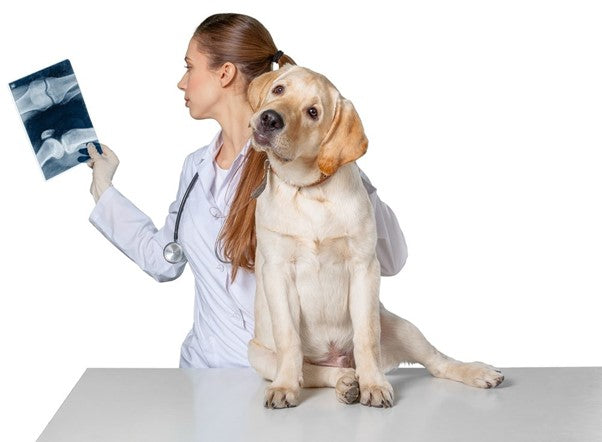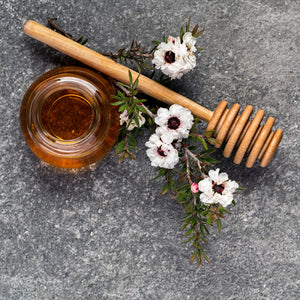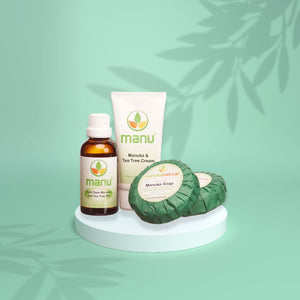
How to Recuperate an Injured Dog
Dog training exercises for when your dog has been injured
“You’ll need to keep him quiet for the next few weeks … No dog training exercises at all.”
If you’ve heard these words from your vet, chances are they caused immediate anxiety as you struggled to envisage how your eight-month-old bundle of Labrador energy or your three-year-old mixed breed accompanies you on a five-mile run every day.
If that’s the case, you are not alone. This is the reality for many dogs and their owners when a torn ligament, a degenerating joint, or some other injury comes their way.
And it means that restricted activity is essential for recovery or pain management. However, dogs can’t be held down for very long.
You can tell if your dog needs a little bit more exercise/attention every once in a while. Like in the evening because he/she will start acting up in the house or messing with the cats.
So you do a quick 10-minute wrestle/play? But it’s not enough, isn’t it?! They would like to play more; they always want more.
So how to keep dog training exercises without messing up their recovery?
It is important to proceed with dog training exercises even now
From the perspective of basic physiologic principles, there is no reason injured dogs should not benefit from some exercise just as humans and other animals do.
Planned dog exercise helps your dog stay fit, build and maintain muscle, and support joint health. It also helps to channel some of that energy that would otherwise be directed towards disruptive and destructive behaviors when the dog is bored.
Training is more than just a physical thing. It provides your pet with mental stimulation that helps keep him healthy and happy. In addition, playing and spending time with your dog will help you develop a stronger bond while reducing destructive behaviors and developing desirable behaviors.
Maintaining their regular indoor physical routine is slightly different from their normal outdoor activities but not challenging with the right tips and tools.
9 indoor dog training exercises to stay active while injured
If you’re wondering precisely what you can do around the house without causing chaos, don’t worry – we’ve put together a list of exercises we think your injured dog will love.
There are many dog chew toys that your dog can use to occupy his time, but the games below are perfect for one-on-one time with your dog.
1. Bubble Chasing
If there’s one thing both dogs and kids love, it’s bubbles. So if you’re worried about your furry friend eating foam, there are edible bubbles for dogs. Also, there are lots of recipes online for making your own.
Another option would be to use a non-toxic bubble solution for children. Just make sure you use these soap bubbles sparingly, so your dog doesn’t swallow too much.
Bubbles flying around will stimulate your dog’s attention and raise his wish to get up even if he/she is injured or has a bad limp.
2. Scent Training
While dogs can be trained to detect a wide range of scents, many people start by having their dogs sniff treats. You will need your dog’s favorite treats and two boxes to start scent training.
Put the treat in one of the boxes and place it next to the empty one on the floor in front of your dog – the rest is up to your puppy to figure out. If you want to increase the hardness even more, add more empty boxes and close all the lids on the boxes.
You can even extend this game by hiding treats around the house and telling your pup to find them – be sure to start with the strong-smelling treats.
3. Create an obstacle course
Your dog doesn’t have to be at a show to try an obstacle course! If your dog is injured, you can go to another room and call him out or talk to him from time to time. Make some weird noises that will for sure attract his attention. That way, his mental stimuli will come first. The problem for him is that he can’t see what is going on, so he will be eager to recover faster.
Although dogs can’t identify themselves in the mirror, they could be more self-aware than experts think.
4. Towel Unrolling Game
Here’s another game for dogs who are really food motivated – simply take a towel, put a treat in the middle near the end, roll it up, add another treat and repeat until the towel is rolled up. Then show your dog how to play the game by unrolling the towel and showing him that there is a treat inside.
As they learn how to play this game, you can reduce the number of treats so that they have to unwrap the entire towel to get the reward. You can also reduce the size of the goodies to help your dog learn to hunt more.
This natural foraging technique enriches both physically and mentally. For a store-bought option, that’s a little more challenging. Instead, look for a dog play mat or sniffer mat.
5. Find-It: Ball Pit Edition
If you have a kiddie pool and a bunch of colorful plastic balls left over from your child’s childhood or birthday, you can give them a new life by turning them into entertainment for your dog. Simply put a few treats or your dog’s favorite toy at the bottom of the paddling pool, fill it with balls and let your dog find it.
6. Indoor Digging
If you’ve noticed that your dog likes to dig, but you’re not a fan of holes in your garden, indoor digging allows your dog all the fun of exploring without the mess.
All you’ll need are blankets, towels, or sheets (make sure you don’t mind them getting scratched or chewed.) Best to choose old ones that you don’t use anymore.
Simply stack the blankets on each other and hide some toys or treats between the layers. Show your dog that there are treats between the layers – if they can’t seem to get the hang of it, try using fewer blankets or sheets to start with. Then, you can keep adding more layers to add difficulty.
This is similar to #4 but with more layers.
7. Hide and Seek
Here’s an activity that engages your pup’s body and mind. The first few times you try to hide, you probably want to hide somewhere that isn’t entirely out of sight so your dog isn’t completely lost on how to find you. Then, take this game to the next level as your pet heals.
8. Flirt Pole
All you need is a stick, string, and one of your dog’s favorite toys. Then, simply tie a line to the end of the stick and a toy to the end of the string and wave it like you’re waving a feather – your pup will surely give a sensation.
Hm, that sounds familiar?!
9. Clean Up
You will probably appreciate this exercise if your dog likes to leave his toys scattered on the floor. Plus, it helps them stimulate their minds and learn new skills and words.
To begin with, you can give your dog a favorite toy. Then, while it’s still in their mouth, offer them a treat. You can practice this until your dog can drop his toy just on the drop command and without having to use food as a bribe.
Now that you have a few options to help your dog stay active when stuck for recovery, you can start testing which games your dog responds best to. Depending on their training and attention span, some dogs will be attracted to certain games.
Another way to keep your dog engaged is to keep his routine fresh. Don’t play the same games repeatedly, as your dog will lose interest. Playing outside has the advantage of a more dynamic range of sights, sounds, and smells for your dog to discover, but your house will remain relatively static.
Changing the types of games, you play daily will keep the routine exciting and allow your dog to rediscover different ways to play with you, your family, and even some of his favorite toys.
What type of dog training exercises should I begin with when they recover?
Walking!
Humans and dogs are known to possess very similar anatomical structures and physiological mechanisms. As companion animals, dogs also share the environment and lifestyle of humans. In dogs, obesity, diabetes mellitus, cancer, and cardiovascular diseases are associated with increased risks of disability, comorbidity, and mortality, so don’t be afraid to start with dog training exercises.
Even when they sometimes are.
In the study by Rovira et al., agility exercises were performed by 15 dogs in a 400-m-sized field with 40 obstacles installed to assess fitness levels and motor skills.
The agility exercises significantly increased the blood’s RBC, hemoglobin, and triglyceride levels. In addition, Hct, an indicator of oxygen transport capacity in muscles, also increased with walking.
So what this study says is that systemic short-term agility exercises can positively affect hematological and skeletal variables in dogs. (1)
WHY ARE DOG TRAINING EXERCISES IMPORTANT FOR A DOG IN RECOVERY?
Human studies show that low BM
D and MV are associated with several disorders, including inflammatory diseases, osteogenesis imperfecta, degenerative arthritis, and endocrine diseases.
A similar situation is with dogs.
Dog training exercises increase bone mineral density (BMD) and muscle volume (MV). Therefore, they are valuable measurements that show your vet how well your dog is.
The purpose of the following study was to examine the effects of exercise training on heart rate (HR), bone mineral density (BMD), and muscle volume (MV). It was approved by the Institutional Animal Care and Use Committee of Hanyang University and Seoul National University.
In this study, six male beagle dogs underwent 12 weeks of interval exercise.
What did they discover?
The first findings indicated that long-term dog training exercises are feasible for dogs and can improve BMD in the femur (thigh bone) by 12,6%. (2)
What dog training exercises should you avoid in the early stage?
· High impact, concussive activities (running at speed, jumping from a height, ball chasing)
· Lengthy, long-duration activities
· Activities that are very high in intensity (for example, sprinting)
Exercise that is high impact, long duration, or high intensity can impact the soft tissues surrounding the joints in a negative manner. Therefore, this type of exercise can potentially damage the soft tissues, which cannot repair quickly enough.
This is particularly important in the case of hip dysplasia, where puppies are born with normal hips but develop laxity as they grow (Riser, 1974).
Evidence also suggested that providing some off-leash outdoor exercise to recovery dogs on the soft ground reduces the incidence of hip dysplasia (Krontveit et al., 2012).
From this information, advice can be given to owners based on the size of the dog they own as to how long they should avoid the activities that could put their dog at an increased risk of joint disease or hurting themselves again.
Let’s not forget nutrition and weight management
Nutritional deficiencies in growing dogs appear to carry far less significance than the over-provision of nutrients.
However, both over-feeding (leading to an excess of multiple nutrients and energy provided) and supplementary nutrients such as calcium could increase the risk of developing diseases including hip dysplasia, elbow dysplasia, and osteochondrosis dissecans.
Protein
In this study, the feeding of elevated protein levels was associated with higher bodyweights, which, as discussed above, may, in theory, increase eccentric loading through the joints, which could increase the risk factor for alternative developmental joint diseases such as hip dysplasia.
Fat
As a high-fat diet is likely to result in a higher than desirable body condition score, this is also likely to be a risk factor for other forms of developmental joint disease.
Calcium
Provision of excessive amounts of dietary calcium has been shown histologically to cause changes in both bone and cartilage tissue.
Vitamin D
Vitamin D supplementation in the diets of growing dogs does not appear to reduce the risk of skeletal disease as was once thought (Kealy et al., 1991). Therefore, it would seem unnecessary if the puppy is fed balanced, complete food.
Home-made versus commercial food
It is more difficult to ensure that a home-made diet provides adequate calories for the growing dog. If you wish to do so, please conduct extensive research to ensure the diet provided is suitable for the dog’s needs.
Supplements
Superflex-V is a proven natural remedy for osteoarthritis and joint pain in dogs of all breeds and ages.
Scientific evidence proves that deer velvet antler and NZ green shell mussel supplement is a safer and more effective treatment for osteoarthritis and joint pain in dogs than the use of non-steroidal anti-inflammatory drugs (NSAID’s).
It gives you the proper dosage and the nutrients your pal needs to recover faster (Proteins and Growth Factors, Glycosaminoglycans (GAGs), Lipids, Minerals, and Trace elements).
There is simply no other supplement – natural or synthetic that can replicate the compounds present in total balance as are in Superflex-V.
It doesn’t have to be Superflex-V, but it has to give your pup the power to hold on and recover faster along with dog training exercises.
In the end …
How would you characterize your dog’s general activity level at this point?
Is he a boisterous youngster who sometimes epitomizes the notion of perpetual motion? Or is he a bit of a couch potato who prefers joining you in watching a DVD to exercising? Establishing this will help you get a handle on the level of alternative stimulation you will need to provide.
I wouldn’t recommend removing the walk even if you’re noticing the training wears him down. Taking a dog for a walk is meant to stimulate them mentally and physically. Even if you take the same path every day, the smells are constantly changing, as is the interaction your dog has with people or other pets. This outside source of stimulation is something he won’t get in the yard and will wear him out more quickly.
If he’s still not exhausted after the walk, try interactive toys, such as Kongs, if you don’t have the time to wear him down more.
If you do have time, it’s the best time to focus his energy more on training like you’re doing now!
Please share this with your social media contacts or anyone you think could benefit from manuka honey.



Leave a comment